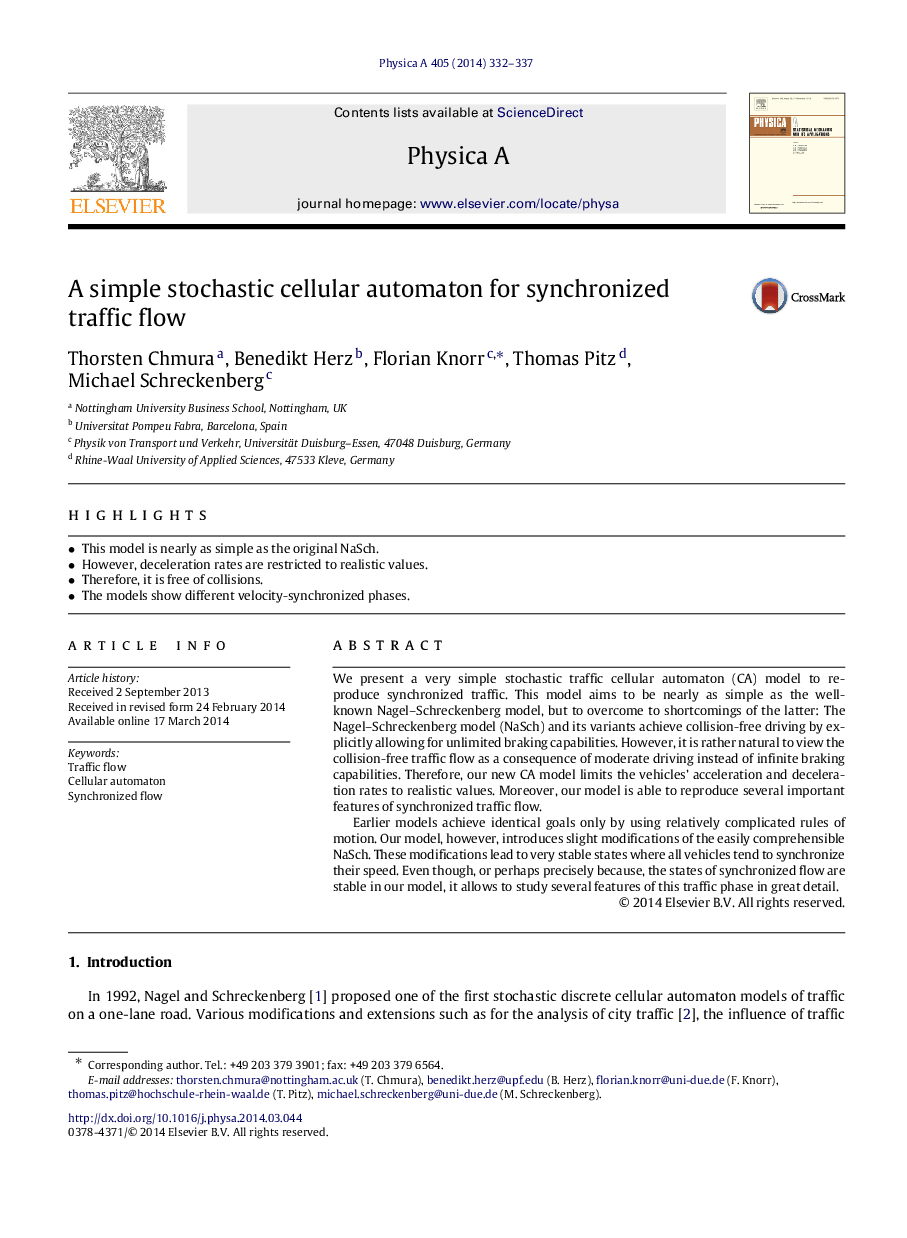| Article ID | Journal | Published Year | Pages | File Type |
|---|---|---|---|---|
| 977336 | Physica A: Statistical Mechanics and its Applications | 2014 | 6 Pages |
•This model is nearly as simple as the original NaSch.•However, deceleration rates are restricted to realistic values.•Therefore, it is free of collisions.•The models show different velocity-synchronized phases.
We present a very simple stochastic traffic cellular automaton (CA) model to reproduce synchronized traffic. This model aims to be nearly as simple as the well-known Nagel–Schreckenberg model, but to overcome to shortcomings of the latter: The Nagel–Schreckenberg model (NaSch) and its variants achieve collision-free driving by explicitly allowing for unlimited braking capabilities. However, it is rather natural to view the collision-free traffic flow as a consequence of moderate driving instead of infinite braking capabilities. Therefore, our new CA model limits the vehicles’ acceleration and deceleration rates to realistic values. Moreover, our model is able to reproduce several important features of synchronized traffic flow.Earlier models achieve identical goals only by using relatively complicated rules of motion. Our model, however, introduces slight modifications of the easily comprehensible NaSch. These modifications lead to very stable states where all vehicles tend to synchronize their speed. Even though, or perhaps precisely because, the states of synchronized flow are stable in our model, it allows to study several features of this traffic phase in great detail.
